By Joe Dembeck, text and photos
For many, winter is something to wait out until spring arrives. But for woodland owners it provides endless opportunities to enjoy their property. One of my favorite winter stewardship activities is pruning younger, well-formed white pines. The pruning of the lower branches is solely focused on allowing future growth of clear “knot free” wood, thereby increasing the value of the tree as a higher-grade sawlog.
Though I have pruned about 2000 white pines across my property over the last 15 years, return on investment will be made by the generation after me. But I still feel it is a valuable use of my time as it allows me to further my understanding of the woodlands by venturing around in search of trees to prune. Also, when I see a pruned pine on my property, I take care not to damage it when I am cutting firewood or doing other forestry work. So pruning is a way for me to mark better quality trees that have a lot of growing ahead of them!
Selecting Pines to Prune
The literature about how to select pines to prune is vast. Though dated, a good resource to review is the Maine Forest Service’s “Pruning Your Forest Trees” (link: https://digitalmaine.com/cgi/viewcontent.cgi?article=1231&context=for_docs).
When selecting trees for pruning I am looking for trees that have a good live crown and their bark is smooth, an indicator of younger age and good growth potential.
It is often suggested that trees be pruned to a height of 17-18 feet from the ground in order to provide a 16ft sawlog when harvested. I try to meet this standard but don’t let it prevent me from pruning trees to a height less than 17 feet. If I can get a 10ft base log from a pine, I will prune the tree. We often cut a few pines when we need boards sawn for a project, and maybe 15-20 years from now the tree I just pruned to 10 feet or so might suit the need.
I often will prune 4-6 inch diameter trees that may range in total height from 15-25 feet, but only prune to a height of 8-10 feet. Making note of these trees in my forestry worklog, I will return to them in 5 years to check on growth and prune further up the trees.
The Process
Once I decide that a tree meets my criteria as a pruning candidate, I make a complete circle around the tree inspecting it for any signs of damage, ranging from woodpecker activity, porcupine gnawing, to old storm damage. If the tree looks sound, I begin the pruning by using a handsaw to cut branches from the ground up to about 6 or 7 feet. Then I prune the remaining branches up to 20 feet with a telescoping pruning pole. I take my time; no reason to rush, the tree isn’t going anywhere.
Though pines can be pruned any time of year, I favor late fall and winter as the potential to incur damage to the bark is reduced. I strongly suggest avoiding spring and summer as the trees are actively growing and the bark is “looser” during this time period which can mean more damage to the tree from falling branches and errant saw strokes.
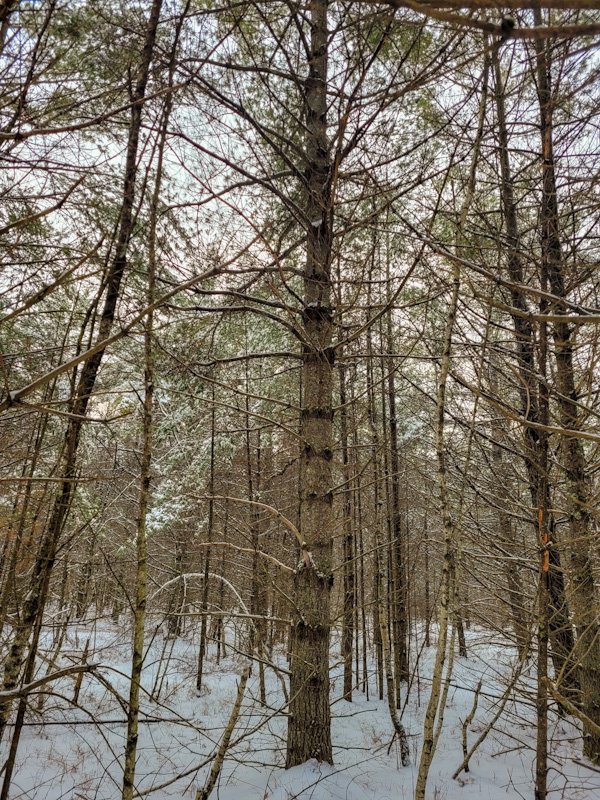
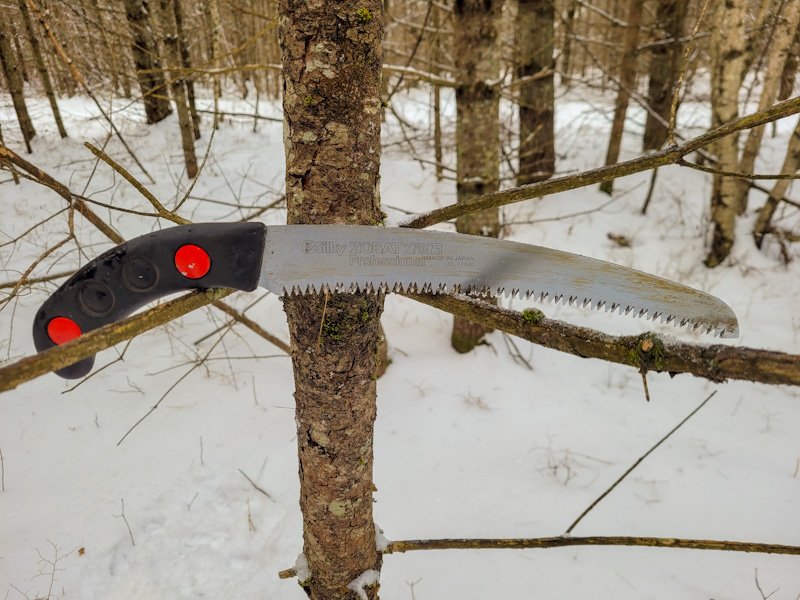
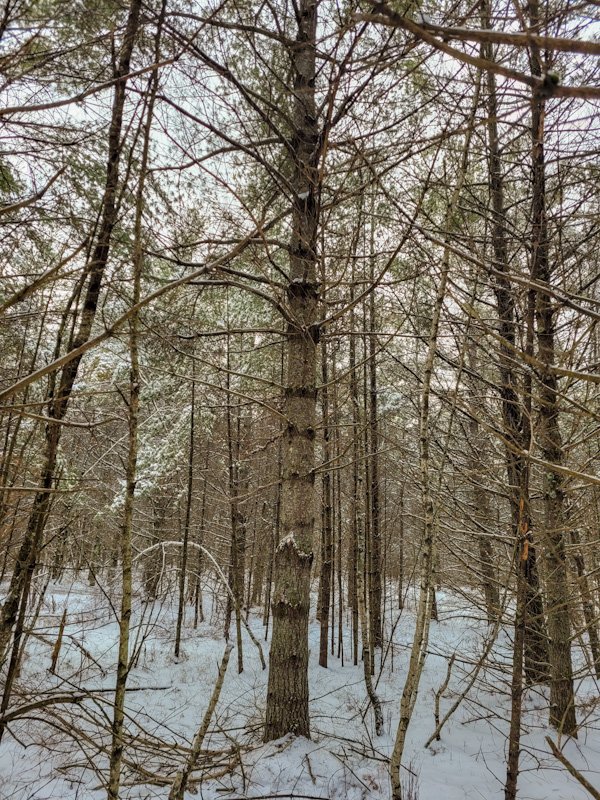
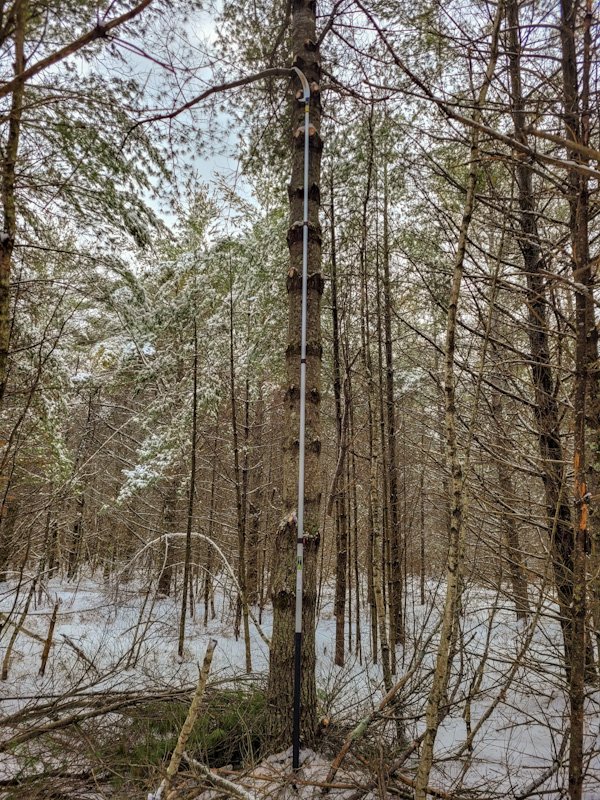
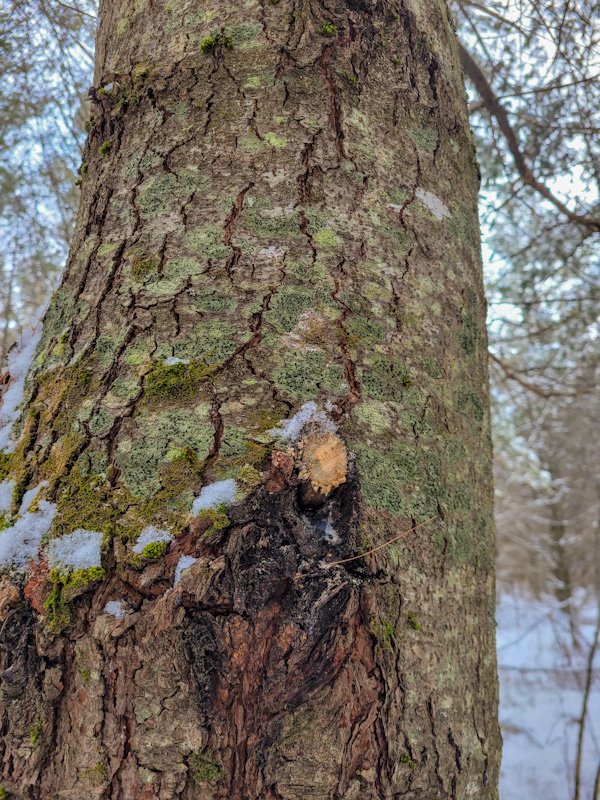
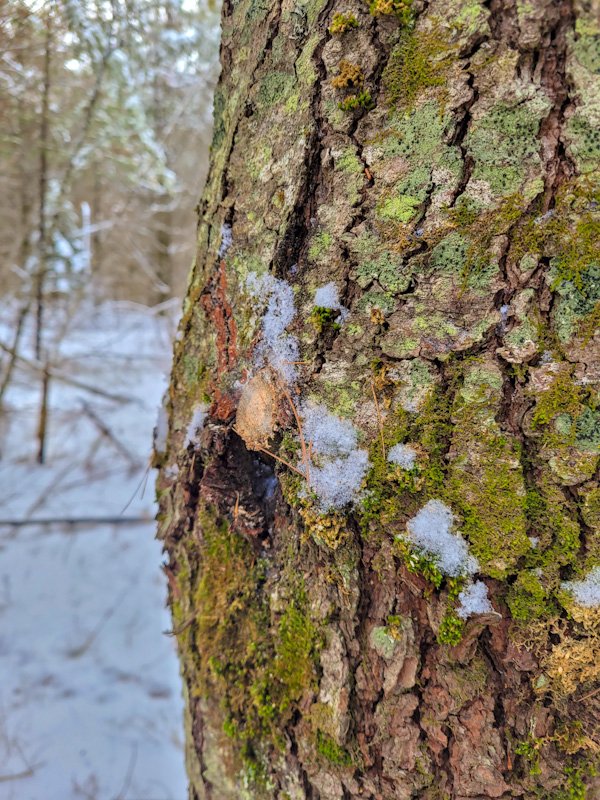
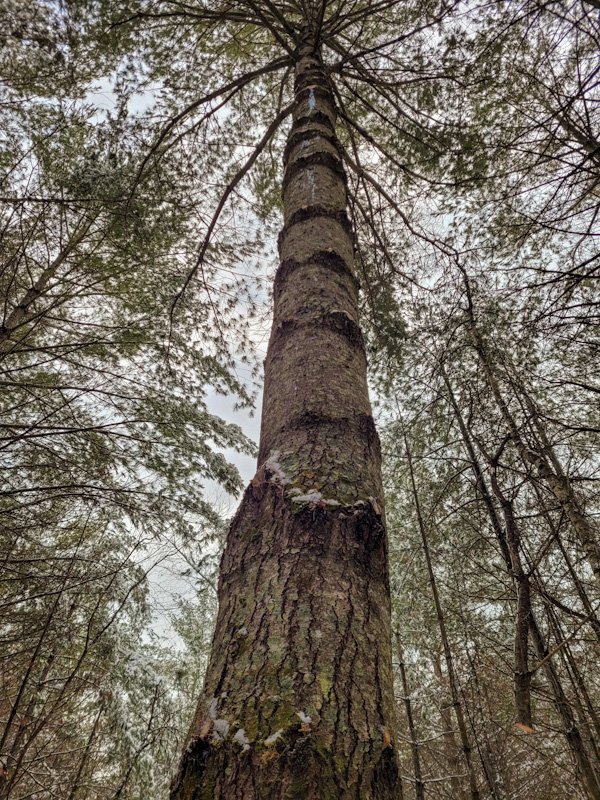
The Tools
I use a Silky Zubat 270 hand saw (Photo 2) for the lower branches and a Silky Hayauchi pole saw (Photo 4) for my work. These tools are very well made and if taken care of will last for tens of thousands of branches. The blades are designed to cut only on the pull stroke which allows for better saw control. I know individuals who use power pole saws to perform pruning work, though from my observations there is the greater potential for damaging the tree due to the spinning chain.
Closing Notes
Always wear cut-resistant gloves when handling pruning saws as they are SHARP, which means cuts can be deep!
Pace yourself on the first couple of days of pruning. You are using muscles in a manner that most folks don’t commonly do.
If you plan on doing a lot of pruning work on branches over 10 feet in height an arborist’s helmet is a good suggestion. The buckle will keep it on your head when tilting up! And they are much more comfortable than a forestry helmet.
To remove pitch from your saw blades, coat them with margarine and let them sit for 20 minutes. Then use a rag (while wearing gloves, remember) to wipe off. A light scraping with a regular head screwdriver will aid in the removal of more stubborn build-up. Margarine is much safer for the environment than other compounds often suggested as pitch removers.
Joe Dembeck is executive director at Somerset County SWCD, chair of the Upper Kennebec Valley Chapter of Maine Woodland Owners and a woodland owner in Skowhegan.

